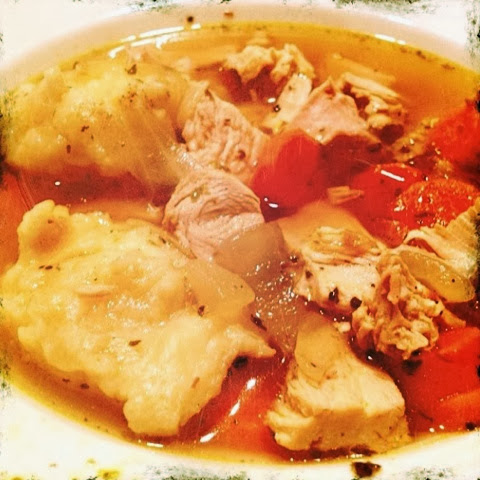There are a few heated debates in the world of pie, one of them being which source of fat to use in order to moisten and flake-ify your crusts. Some grannies refuse to use anything but shortening, others say butter is the answer, a few crazies say it's possible with oil, and some swear by chilled lard. If you're a vegan, your obvious choice is vegetable shortening. Shortening can do the job if it's kept chilled throughout the dough-making process, and it can lend a good texture to your crust, but it's messy, sticky, and not that fun to work with. And you're not going to win any flavor contests with it. I've tried crusts with different fats, and lard is good if you're living in the Little House on the Prairie and you want to use everything and not waste anything, that's a good old school method and certainly acceptable. But for the absolute best flavor with flaky results, the obvious choice is butter! A lot of pie crust recipes will tell you to pulse the butter and flour in a food processor, but this is a serious error. The flour gets overworked and tough and the flakiness is sacrificed. Using your fingertips or a pastry cutter to blend the butter and flour takes under 5 minutes, and the result will be a more tender crust. Besides, cleaning the food processor is a pain. Go old school with pie crust.
(Makes 2 pie crusts)
3 cups unbleached all-purpose flour
1 cup (2 sticks) chilled butter
1 1/2 teaspoons salt
1 teaspoon vinegar
1/2 - 3/4 cup ice water
Measure out your salt and flour, combine in a large bowl, and put into the freezer, at least 15 minutes. Meanwhile, cut your butter into small chunks and place them in a bowl, then refrigerate.
Place ice into a liquid measuring cup, then fill with water and stir around. Add the vinegar to the water, then put the water into the refrigerator. Sprinkle a good amount of flour on a large work surface, then grab your chilled flour and butter from the freezer and fridge. Using your fingertips or a pastry cutter, crush the butter cubes into the flour, rubbing between your hands or fingertips and continually making the chunks of butter smaller, until the mixture resembles pea-sized crumbs. Don't worry about uniformity; you don't want the chunks of butter to completely disappear.
Next, take out your ice water from the fridge and remove the ice cubes. Begin, a few tablespoons at a time, adding water to your butter crumb mixture, and stir with a wooden spoon. Continue adding maybe around 8 tablespoons of water, until all of the crumbs come together and stick in one large dough ball that comes away from the sides of the bowl.
At this point, the dough may still be a little moist, but that's okay because more flour will get into it after the next step. Dump your dough onto your floured work surface, and with floured hands, press the dough together and fold it 4 or 5 times, occasionally sprinkling a little flour on top, until the dough is a nice happy lump.
Ideally, you should see big visible chunks of butter in the dough. When the heat hits the cold butter in the dough, the butter will start to melt and steam will cause layers to puff up in your crust. That puffing and layering action during cooking will also result in a golden brown crust that is a little thicker than it was when you rolled it out. So if you see little chunks of butter when you roll out your crust, you should feel good about it. Cut your dough in half and wrap each half in saran wrap, flattening into a disk, then refrigerate at least 30 minutes before you want to roll it out. This will give the dough a chance to rest and get chilly again.
This recipe will give you one top and one bottom crust, or two bottom crusts... you get the picture. When you're ready to roll your dough, always be sure to roll your crusts from the middle out, only rolling from the center to the edges, never rolling back and forth. This will keep the pie dough from shrinking back on the pie plate when you bake it.
Now, find your favorite pie recipes and go have a little fun making a beautiful pie crust! Your friends and family will love it before they take their first heavenly bite.











































